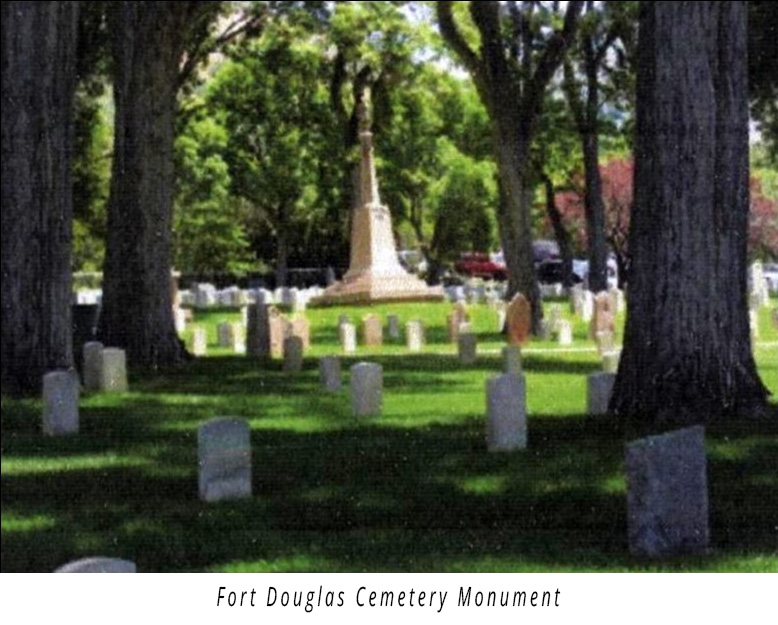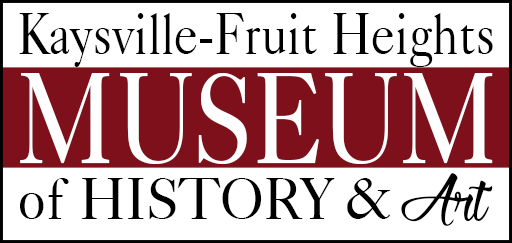Samuel Lane Jones

1828-1891
If you visit the cemetery in either Kaysville, Farmington, Bountiful, Salt Lake City, or at Fort Douglas, Utah you will undoubtedly encounter several headstones with very uniquely carved designs. Chances are that some of these unique headstones were carved by a stonemason named Samuel Lane Jones Sr.
Some of the headstones that Samuel created between 1860 and 1880 are now showing signs of severe environmental wear, but others are still in surprisingly good condition. Since the stone of general use at the time Samuel was carving was sandstone, some of Samuel’s creations have not weathered as well as those he created in granite or marble. However, there are still many sandstone headstones that can be identified as Samuel’s because he carved the name “S. L. Jones” in the right-hand bottom comer of each headstone he created.
Samuel Lane Jones Sr. was born in Kidderminster, England on April 14, 1828. He was the son of Thomas and Susannah Lane Jones. He received his elementary education at a boarding school in England; and, as a young man, he worked as an apprentice builder and stonemason for about seven years. During the time of his apprenticeship, Samuel joined the LDS Church; and, at the age of nineteen, immigrated to Utah Territory in 1847. He settled first in Salt Lake City and was married to his first wife in 1854. While living in Salt Lake City, Samuel worked as a stone carver. He worked as an apprentice for William Ward Jr. who was the foreman for the stonecutters who worked on the Salt Lake LDS Temple and Brigham Young’s Lion House. Since Samuel was trained in the finer aspects of stonecutting rather than just rough cutting, he likely contributed to some of the more detailed stonework on these buildings. Samuel also worked part-time for Wat-son Brothers, a stonecutter firm Salt Lake City.
Shortly after Fort Doulas was established in 1862, an area near the mouth of Red Butte Canyon was set aside as a cemetery. In January of 1863, several Army soldiers were killed fighting Indians at the Battle of Bear River. A few months later, additional soldiers from Fort Douglas were killed in a fight with the Ute Indians near Spanish Fork; and Samuel Jones and another stone carver, James Contell, were commissioned to create a tall sandstone monument to commemorate the lives of the soldiers killed in these two Indian encounters. The monument stands on a mound in the center of the Fort Douglas Cemetery today. Also, Samuel carved several other individual headstones for military personnel who were buried in this cemetery.
were killed in a fight with the Ute Indians near Spanish Fork; and Samuel Jones and another stone carver, James Contell, were commissioned to create a tall sandstone monument to commemorate the lives of the soldiers killed in these two Indian encounters. The monument stands on a mound in the center of the Fort Douglas Cemetery today. Also, Samuel carved several other individual headstones for military personnel who were buried in this cemetery.
At some point in the early 1860s, Samuel’s first marriage was dissolved; and on January 12, 1869, at the age of thirty-nine, he married again. His new bride was fifteen year old Martha Simmons of Kay’s Ward. Following their marriage, the newlyweds lived for two years in Salt Lake City and then moved to Kaysville. Samuel and Martha bought a small lot near Martha’s brother just north of the Kaysville City Cemetery in what was then called Simmons Hollow. Samuel built an adobe home and did some fanning. However, because of his proximity to the cemetery, he continued to carve headstones. He worked closely with Kaysville’s undertaker, John Barton, and carved many of the headstones in the section of the Kaysville City Cemetery known as the “pioneer plots.”
Martha Simmons Jones was a gifted gardener. Her passion was raising flowers, And, in her flower garden, she raised a wide variety of beautiful flowers. Her talent and interest in raising flowers influenced the decoration of the graves of her Kaysville fiends. When Samuel completed and placed a headstone, Martha decorated the grave with flowers from her garden. Because of Martha’s influence, Samuel’s Kaysville head-stones have more floral designs than his earlier Salt Lake and Fort Douglas carvings. An out-standing example of the use of flowers was in the stone that Samuel carved for Jane Wardley Smith, the wife of one of Kaysville’s original pioneers—John Sivil Smith. On this stone, Samuel carved a verse that reads:
“Thus do we walk without her,
And keep unbroken the bond which nature gives
Thinking that our remembrance, though unspoken,
May reach her where she lives”
Above the verse is a large cascade of flowers that covers the upper two-thirds of the stone. The carving and design of this stone are one of the most elaborate that Samuel Jones ever carved.
Several years after the original stone was placed, the John S. Smith family replaced Jane’s sandstone headstone with a large granite family monument. The old grave marker was returned to the Jones family as a keepsake of Samuel’s outstanding stonemason work. Myrtle Jones Phillips. Samuel’s daughter, had this stone in her vestibule and everyone who visited her home saw the stone. When Myrtle passed away, the head-stone was donated to the Heritage Museum of Layton where it has appeared in several of the museum’s rotating exhibits.
Samuel Lane Jones Sr. died in Kaysville on November 17, 1891. He was buried in the Kaysville Cemetery next to his home. Martha later married John Weaver. John died in 1903 and Martha Simmons Jones Weaver died in 1936. All of their graves are marked with a Samuel L. Jones designed headstone.
Sources
- Samuel Lane Jones – Master Stone Carver” article written by Bill Sanders.
- “Kaysville Our Town – A History”, by Carol Ivins Collett, 1976, pg. 49, 177.
- Salt Lake City: the “Work of Four English Stone Carvers,” Utah State Historical Quarterly, Vol. 56, No. 4, pp. 310-330.
- Barnes, Martha Jones, manuscript, “A Sketch of the Life of Martha Simmons Jones Weaver.”
- Photos courtesy of: Heritage Museum of Layton.
